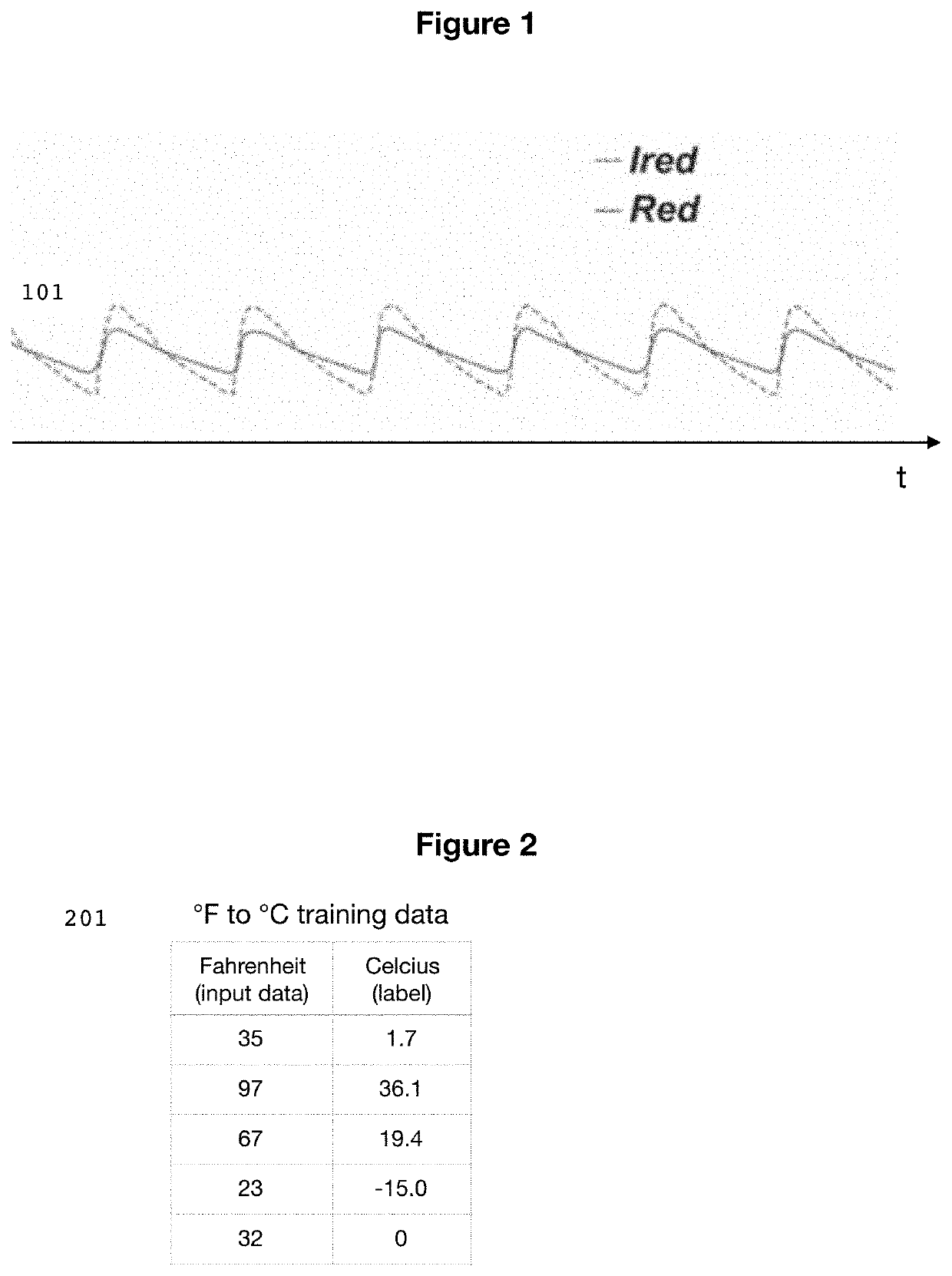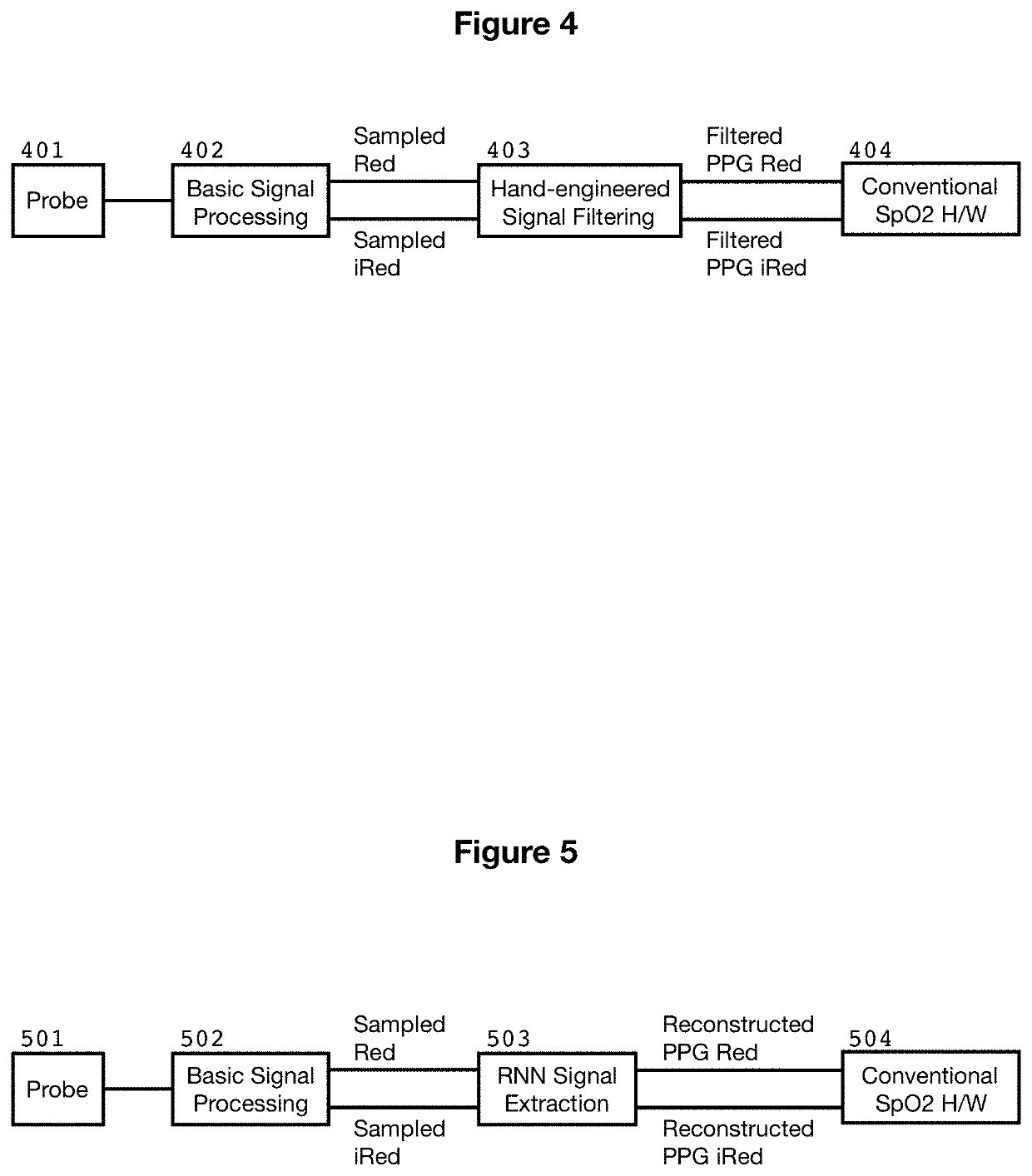Method for robust and noise-tolerant SpO2 determination
- Summary
- Abstract
- Description
- Claims
- Application Information
AI Technical Summary
Benefits of technology
Problems solved by technology
Method used
Image
Examples
Embodiment Construction
[0066]There are several preferred embodiments possible: embodiment as part of an SpO2 sensor device, embodiment as an appendage to a sensor device (such as laptop / monitor or smartphone) and embodiment completely separate from the SpO2 sensor device (such as a hosted cloud service).
Embodiment as Part of the SpO2 Sensor Device
[0067]The RNN signal reconstruction model can be included within the SpO2 sensor device [701] itself by instantiating the RNN model in a simple firmware / software environment within a low-cost embedded CPU. Many SpO2 devices already implement signal processing on-device and adding the RNN processing step is feasible on such a platform.
[0068]The sensor output [702] is routed to the CPU [703] and fed to the RNN software model [704]. The reconstructed signal [705] is routed from the output of the RNN model to the parameter processing and display portion [706] of the SpO2 device.
[0069]The RNN signal reconstruction model can alternatively be included within the SpO2 se...
PUM
 Login to View More
Login to View More Abstract
Description
Claims
Application Information
 Login to View More
Login to View More - R&D
- Intellectual Property
- Life Sciences
- Materials
- Tech Scout
- Unparalleled Data Quality
- Higher Quality Content
- 60% Fewer Hallucinations
Browse by: Latest US Patents, China's latest patents, Technical Efficacy Thesaurus, Application Domain, Technology Topic, Popular Technical Reports.
© 2025 PatSnap. All rights reserved.Legal|Privacy policy|Modern Slavery Act Transparency Statement|Sitemap|About US| Contact US: help@patsnap.com



